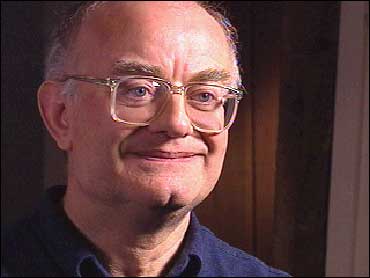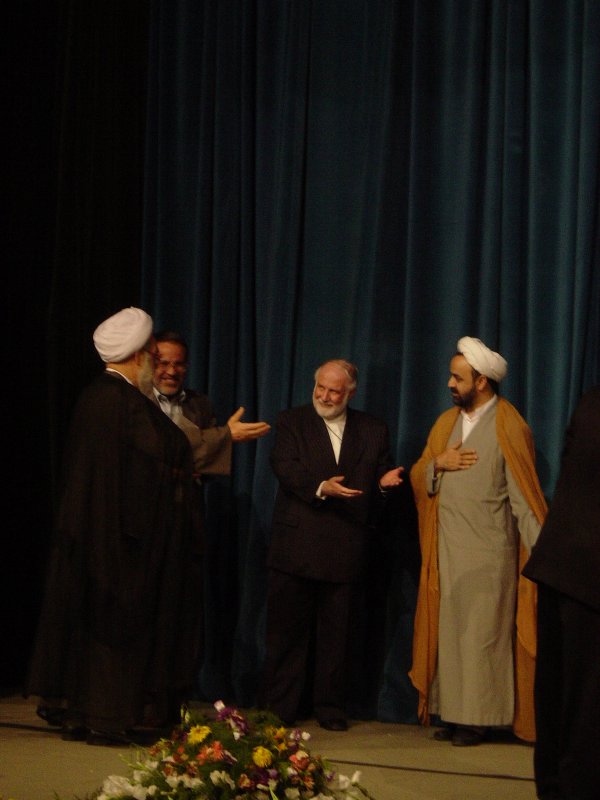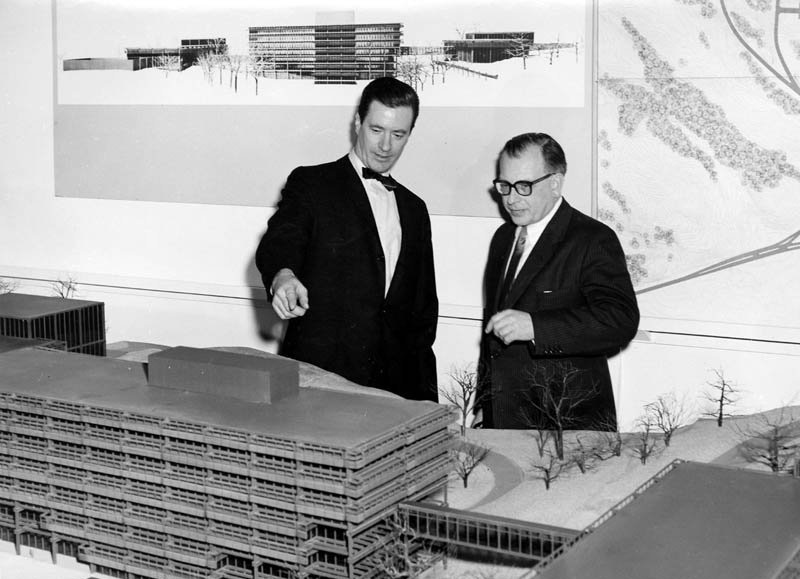Entries Tagged 'NONFICTION' ↓
January 23rd, 2009 — Black Music, NONFICTION, Politics, Pop Culture

Copeland: Baby’s got belting power. Photo by Carol Friedman
 Harlem native Shemekia Copeland has been making a name for herself as a singer of gutsy, earbusting Black music since childhood. Born into blues royalty, the daughter of now deceased Texas blues guitar legend Johnny Clyde Copeland, she’d often accompany her dad onto the stand, right, where she’d wow audiences with a voice womanly beyond her years.
Harlem native Shemekia Copeland has been making a name for herself as a singer of gutsy, earbusting Black music since childhood. Born into blues royalty, the daughter of now deceased Texas blues guitar legend Johnny Clyde Copeland, she’d often accompany her dad onto the stand, right, where she’d wow audiences with a voice womanly beyond her years.
She’s still doing it. Though not yet 30, Copeland sings songs full of the attitude, soul-weariness, and hard-earned wisdom that is the hallmark of her trade. On her new album, Never Going Back, songs such as “Sounds Like the Devil,” “Rise Up,” and “Limousine” portray a woman beset with calamity, but facing it undaunted; tired and often demoralized, certainly, but absolutely not giving up.
Shemekia Copeland is a guest today on my WBAI-NY / 99.5 FM radio show, NONFICTION, this afternoon, Friday, January 23, at 2 pm ET.
 Then, Joe Stevens, half of the transatlantic directing team Randall Stevens with Nicolas Randal, will talk about their 2008 short, Made in Queens. The film documents a group of Trinidadian-Tobagonian youth living in said borough who, as a hobby, build “enormous stereo systems jury rigged onto ordinary BMX bikes.”
Then, Joe Stevens, half of the transatlantic directing team Randall Stevens with Nicolas Randal, will talk about their 2008 short, Made in Queens. The film documents a group of Trinidadian-Tobagonian youth living in said borough who, as a hobby, build “enormous stereo systems jury rigged onto ordinary BMX bikes.”
The gargantuan “Basszilla,” above, posed with its creator, crew leader Nicholas Ragbir, features
Four 16 volt car batteries powering four 15” bass speakers in back, two 6.5” mids over two 6×9” mids up front. Two 3000 watt bass amps and one 2000 watt mids amp. DVD touch screen with navigation and music equalizer. 22 tooth chainring. Heavy duty chain, rims, tires and custom-welded support brackets.
Made In Queens is screening tomorrow at the Queens Museum of Art, as part of the Queens International 4 exhibition (January 24 – April 26). “Rumor has it,” says Joe, “the crew and a couple of the bikes may even be on hand.” Hopefully they’ll find parking.
 Then, Barack Obama’s inaugural address on Tuesday has been widely hailed by people of every stripe, and on every side of the political spectrum. In The New York Times, Gordon Stewart, a speechwriter for President Jimmy Carter, said the address was filled with “fine language” and “thrilling sentiments.” Meanwhile, Clark S. Judge, a speechwriter for President Ronald Reagan, called it a “marvelous,” “deeply American” speech.
Then, Barack Obama’s inaugural address on Tuesday has been widely hailed by people of every stripe, and on every side of the political spectrum. In The New York Times, Gordon Stewart, a speechwriter for President Jimmy Carter, said the address was filled with “fine language” and “thrilling sentiments.” Meanwhile, Clark S. Judge, a speechwriter for President Ronald Reagan, called it a “marvelous,” “deeply American” speech.
But was it? Wouldn’t that depend on what vision one has of America?
Ronald Takaki, emeritus professor of ethnic studies at the University of California, Berkeley, and author of the book A Different Mirror: A History of Multicultural America, above, believes that Obama’s speech rendered a picture of America that, though inspiring to some, leaves out far too many Americans.
You can hear Shemekia Copeland, Joe Stevens, and Ronald Takaki by tuning in at 2 pm. If you’re outside of the New York tri-state, check out our stream on the web. If you miss the live show, dig into our archives for up to 90 days after broadcast.
January 16th, 2009 — Books, Controversy, Hip-Hop, NONFICTION, Politics, Sex

Charlotte, NC public relations consultant Charla Muller had a problem.
Her husband, Brad, was about to turn 40, and she needed to appropriately commemorate the date. She wanted to give him something unique and original, something that nobody else would think of giving him, “something so dramatic and different that Brad would never ever pause to remember what I gave him for his fortieth birthday.”
She thought, and thought, and strategized, and when she finally told her husband what she wanted to give him, “he literally fell over”:
Sex. Every Day. For a Year.
Her story of their experience, 365 Nights: A Memoir of Intimacy, tells how gettin’ it on every 24 hours “transformed a marriage.” But as opposed to being a diary of Charla and Brad’s technique, “it’s a book about the ups and downs of married life, trying to have it all (and failing) and figuring out how to get back to the basics of a grounded, faith-based marriage,” Charla says on her web site.
Charla Muller is the guest today on my WBAI-NY / 99.5 FM radio show, NONFICTION, this afternoon, Friday, January 16, at 2 pm ET.
 Following my conversation with Charla, I’ll also be talking with Jackie Salloum, director of the documentary Slingshot Hip-Hop, right, and Ora Wise, education director / associate producer of the project.
Following my conversation with Charla, I’ll also be talking with Jackie Salloum, director of the documentary Slingshot Hip-Hop, right, and Ora Wise, education director / associate producer of the project.
The film covers the resistance against Israeli occupation in Palestine as it is waged intellectually by hip-hop artists in the region. Some may recall that I wrote about Jackie’s film and the Palestinian hip-hop scene, back in the March 2008 edition of VIBE magazine, and here, on MEDIA ASSASSIN. As well, I subsequently spoke about these subjects on WNYC Radio’s Soundcheck program, with host John Schaefer.
Given the logarithmic escalation over the past three weeks of the ongoing atrocities in the region, I’m thrilled to have these brave activists on my program.
You can hear their ideas by tuning in at 2 pm. If you’re outside of the New York tri-state, check out our stream on the web. If you miss the live show, dig into our archives for up to 90 days after broadcast.
January 9th, 2009 — Books, Gender, NONFICTION, Sex

Blessed, or cursed, with a bustline out of proportion to her diminutive frame, author Susan Seligson joined the “Lemons? Make Lemonade!” brigade and wrote a book about America’s fascination with breasts.
 Stacked: A 32DDD Reports from the Front chronicles the writer’s travels everywhere from the offices of a plastic surgeon specializing in breast enhancement, to New York’s best bra shop, to a Las Vegas convention of exotic dancers. There, Seligson waits to meet the cantilevered Maxi Mounds, right, whose 42M brassiere cups each hold one 20-pound ta-ta stuffed to capacity with polypropylene string.
Stacked: A 32DDD Reports from the Front chronicles the writer’s travels everywhere from the offices of a plastic surgeon specializing in breast enhancement, to New York’s best bra shop, to a Las Vegas convention of exotic dancers. There, Seligson waits to meet the cantilevered Maxi Mounds, right, whose 42M brassiere cups each hold one 20-pound ta-ta stuffed to capacity with polypropylene string.
Susan Seligson is the guest today on a repeat edition of my WBAI-NY / 99.5 FM radio show, NONFICTION, this afternoon, Friday, January 9, at 2 pm ET.
We’re also joined in the conversation by photographer Jordan Matter, whose “Uncovered” project depicts New York City women in public places—at street crossings, on park benches, by bridges—completely topless. He photographed Susan for “Uncovered,” and she documents the experience in Stacked.
You can hear their ideas by tuning in at 2 pm. If you’re outside of the New York tri-state, check out our stream on the web. If you miss the live show, dig into our archives for up to 90 days after broadcast.
December 26th, 2008 — Music, NONFICTION

Venus Verticordia by Dante Gabriel Rossetti, 1864-68
 As a composer and arranger of Christmas carols, London-born John Rutter, right works within what is arguably one of the most beloved, and oldest, forms of Western music, with a template laid down during the European Middle Ages.
As a composer and arranger of Christmas carols, London-born John Rutter, right works within what is arguably one of the most beloved, and oldest, forms of Western music, with a template laid down during the European Middle Ages.
It’s to his credit, then, that, whether re-interpreting long-cherished classics, or creating new ones, his works all shine with a lively and audacious sparkle. As sung by his much-beloved Cambridge Singers, favorites such as “We Wish You a Merry Christmas” or “Deck the Halls” unfold as though they were spirited, new, open-sea sailing anthems. Meanwhile, his own signature works are burnished with the passionate soulfulness of deeply reflected Christian faith and tradition.
I discovered Rutter’s portfolio when I came upon his own masterpiece, “What Sweeter Music,” wafting from a Volvo commercial, of all places. It is, without question, one of the most profoundly gorgeous pieces of hymnody I have ever heard.
John Rutter is the guest on the last edition, this year, of my WBAI-NY / 99.5 FM radio show, NONFICTION, this afternoon, Friday, December 26, at 2 pm ET. This is a special Christmas edition of the broadcast that we’ve aired once a year for about six years now.
On this show, John will talk about, among other topics, his upbringing; on spirituality in music; why he started his own label, Collegium; and the reasons that writing a carol is harder than writing a symphony, all between selections from his 2002 release, The John Rutter Christmas Album.
You can hear this thoughtful artist’s ideas by tuning in at 2 pm. If you’re outside of the New York tri-state, check out our stream on the web. If you miss the live show, dig into our archives for up to 90 days after broadcast.
December 5th, 2008 — NONFICTION, Photography, Science

Is space exploration photography an art or a science?
Geologist Jim Bell, an associate professor of astronomy at Cornell University, lead scientist for the Panoramic Camera (Pancam) color imaging systems on the Mars Exploration Rover Mission (MERM), and creator of the book Postcards from Mars: The First Photographer on the Red Planet, would certainly say that the best space photos seamlessly combine compositional creativity with observational objectivity.
Bell’s Pancams are literally the eyes of the identical Spirit and Opportunity Mars rovers. (In the artist’s illustration, above, you can see the device perched atop the rover’s high, white, T-shaped mast.)
For example, this composite, panoramic image, below, taken by Opportunity about two years ago over a period of three Martian weeks, is of the Victoria Crater, on Mars’ Meridiani Planum, or meridian plain, near its equator.

It was shot, in pieces, bit by bit, from the Cape Verde promontory on the rim of the half-mile wide crater. (Click on it, or here, for a larger, more detailed view of this amazing planetary feature.) To accommodate these extremely wide shots, some of the gatefolds in Postcards from Mars are three feet wide.
 To create such images, the rovers have been operating continuously on the Red Planet’s surface since January 2004. Mars, right, is 150,000,000 miles from Earth—equal to the distance one would cover during a round-trip airplane flight 60 years long.
To create such images, the rovers have been operating continuously on the Red Planet’s surface since January 2004. Mars, right, is 150,000,000 miles from Earth—equal to the distance one would cover during a round-trip airplane flight 60 years long.
As such, the 150, literally otherworldy images in Postcards from Mars, fewer than 1/1,000th the total number taken by the crafts, are like vacation photos from a place no human has ever seen with her own eyes. That is, until NASA starts correcting decades of white-manned spaceflight by deeming the first humans to set foot on Mars will be Black females.
Jim Bell is the guest on this encore broadcast of my WBAI-NY / 99.5 FM radio show, NONFICTION, this afternoon, Friday, December 5, at 2 pm ET.
You can hear his lively and thoughtful ideas by tuning in at 2 pm. If you’re outside of the New York tri-state, check out our stream on the web. If you miss the live show, dig into our archives for up to 90 days after broadcast.
November 28th, 2008 — Culture, Language, NONFICTION

T‘aarof, rendered above in Arabic script, is, according to Wikipedia,
a Persian form of civility emphasizing both self-deference and social rank. The term encompasses a range of social behaviours, from a man displaying etiquette by opening the door for a woman, to a group of colleagues standing on ceremony in front of a door that can permit the entry of only one at time, earnestly imploring the most senior to break the deadlock.
I cite Wikipedia as a source, here—I rarely do this on MEDIA ASSASSIN—because that’s where I discovered this aspect of Middle Eastern culture. (Big up, Wiki: Probably no internet source links more disparate topics than this online medium.)
Reading on,
 The prevalence of t’aarof often gives rise to different styles of negotiation than one would see in a European or North American culture. For example, a worker negotiating a salary might begin with a eulogy of the employer, followed by a lengthy bargaining session consisting entirely of indirect, polite language — both parties are expected to understand the implied topic of discussion. It is quite common for an Iranian worker (even one employed in an Iranian neighborhood within Europe) to work unpaid for a week or two before the issue of wages is finally broached. Likewise, a shopkeeper may initially refuse to quote a price for an item, suggesting that it is worthless (“gh’aabel nadaareh”). T’aarof obliges the customer to insist on paying, possibly several times, before a shopkeeper finally quotes a price and real negotiation can begin.
The prevalence of t’aarof often gives rise to different styles of negotiation than one would see in a European or North American culture. For example, a worker negotiating a salary might begin with a eulogy of the employer, followed by a lengthy bargaining session consisting entirely of indirect, polite language — both parties are expected to understand the implied topic of discussion. It is quite common for an Iranian worker (even one employed in an Iranian neighborhood within Europe) to work unpaid for a week or two before the issue of wages is finally broached. Likewise, a shopkeeper may initially refuse to quote a price for an item, suggesting that it is worthless (“gh’aabel nadaareh”). T’aarof obliges the customer to insist on paying, possibly several times, before a shopkeeper finally quotes a price and real negotiation can begin.
I was stupefied that I’d never heard of this social practice, one whose structure was so elaborate, and whose presence was so intrinsic to Iranian reality, as seen above. I reached out Dr. Michael C. Hillman, a professor of Middle Eastern languages and cultures at the University of Texas at Austin, and author of the book, Iranian Culture: A Persianist View, in order to help me understand this cultural quality. Michael Hillman is a guest, today, on this repeat broadcast of my WBAI-NY / 99.5 FM radio show, NONFICTION, this afternoon, Friday, November 28, at 2 pm ET.
Then, Isaac Dolom, of the late, great, much-lamented Dailysonic podcast—they ceased production in November 2006—takes a trippy look into the microscopic makeup of ordinary sounds. For example, what would a human heartbeat sound like if sped up a thousand times? (Something like a machine, it turns out.) Not to be missed, never to be forgotten.
You can hear their ideas by tuning in at 2 pm. If you’re outside of the New York tri-state, you can check out our stream on the web. If you miss the live show, dig up our archive for up to 90 days after broadcast.
November 21st, 2008 — Books, Medicine, NONFICTION

In writing his book, Better: A Surgeon’s Notes on Performance, Dr. Atul Gawande says, “I’m trying to examine all the gaps involved in what we do. I wanted to show how situations of risk really work, how people in different situations grapple with that.”
Questions like, why do so many people in a hospital die, not from their ailments, but from infections acquired at the medical facility? Or, how does one measure excellence as a physician, when the currency is human life?
Or, as he states, “The paradox at the heart of medical care is that it works so well, and yet never well enough.”
Dr. Gawande is the guest on this repeat edition of my WBAI-NY / 99.5 FM radio show, NONFICTION, this afternoon, Friday, November 21, at 2 pm ET.
You can hear his ideas by tuning in at 2 pm. If you’re outside of the New York tri-state, you can check out our stream on the web. If you miss the live show, check out our archive for up to 90 days after broadcast.
November 14th, 2008 — Architecture, NONFICTION, Photography

Finnish-American architect Eero Saarinen remains one of the most heralded, inventive artists of the 20th century. For example, when William Hewitt, below, CEO of the John Deere tractor company, hired the bespectacled builder in 1956 to fashion their Moline IL world headquarters,
 Hewitt emphasized that, while he wanted a headquarters that was unique, it must reflect the character of the company and its employees. “The several buildings should be thoroughly modern in concept but should not give the effect of being especially sophisticated or glossy. Instead, they should be more ‘down to earth’ and rugged,” he wrote. …
Hewitt emphasized that, while he wanted a headquarters that was unique, it must reflect the character of the company and its employees. “The several buildings should be thoroughly modern in concept but should not give the effect of being especially sophisticated or glossy. Instead, they should be more ‘down to earth’ and rugged,” he wrote. …
Saarinen satisfied Hewitt’s instruction that the buildings look down to earth by using Cor-ten steel for the exterior structure of the building. Cor-ten®, a material that resists corrosion by forming a protective coating of iron oxide, develops an earthy color as it ages, much like newly plowed soil. Developed for railroad track construction and other uses, this marked the first use of Cor-ten® in an architectural application.
The results, above, completed in 1964, three years after Saarinen’s death, were so imaginative they moved one critic to note that, having made something apt and fit for a farm equipment manufacturer, Saarinen had also created a site whose “strong yet artfully detailed lines bear a curious resemblance to Japanese temple architecture.”
Working almost continuously with Saarinen, photographer Balthazar Korab documented every aspect of the great man’s creative process. Over 800 of his images form the massive backbone of a new book, Eero Saarinen: Buildings From The Balthazar Korab Archive, edited by David G. DeLong and C. Ford Peatross.
C. Ford Peatross, a curator with the Library of Congress, is the guest today on my WBAI-NY / 99.5 FM radio show, NONFICTION, this afternoon, Friday, November 14, at 2 pm ET.
Not only did Korab richly, beautifully record Saarinen’s work, argues Peatross—the lush book represents less than 10% of the photog’s archives—but Korab’s proficiency captured the earliest moments of Saarinen’s elusive method, enabling him to look more profoundly into his own deep thinking.
You can hear this original scholar’s ideas by tuning in at 2 pm. If you’re outside of the New York tri-state, you can check out our stream on the web. If you miss the live show, check out our archive for up to two weeks after broadcast.
November 7th, 2008 — Africa, Design, NONFICTION, Technology

On July 1, 2008, Bill Gates, above, stepped down from full-time work at Microsoft Corporation, the company he founded with friend Paul Allen in April 1975. How does his departure affect the now-and-future direction of this corporate behemoth, a company whose software runs over 90% of the world’s computers, with assets of over $70 billion, and whose market capitalization approaches a quarter of a trillion dollars?
This is the fundamental question Mary Jo Foley provocatively addresses in her new book, Microsoft 2.0: How Microsoft Plans to Stay Relevant in the Post-Gates Era. Foley is a guest, today, on my WBAI-NY / 99.5 FM radio show, NONFICTION, this afternoon, Friday, November 7, 2 pm ET.
Then, Alisa Lagamma, curator of a show running at the Metropolitan Museum of Art, “The Essential Art of African Textiles: Design Without End,” will talk about the exhibition and the wide universe of visual materiel the continent’s cloths present.
You can hear their ideas by tuning in at 2 pm. If you’re outside of the New York tri-state, you can check out our stream on the web. If you miss the live show, check out our archive for up to two weeks after broadcast.
October 31st, 2008 — Animation, Automotive, NONFICTION

A hundred years ago this month, Henry Ford’s company drove its first Model T automobile off of his Highland Park, Detroit, MI assembly line…and changed the world forever.
Priced at $850, not only was it the first affordable, mass-produced car the world had ever seen, but the Model T—that’s a 1912 one, above—revolutionized manufacturing, caused an upheaval in labor, forced a reengineering of the American landscape, and reorganized our nation’s social order.
So argues author Lindsay Brooke, in his new book, Ford Model T: The Car That Put the World on Wheels. Lindsay is a guest today on my WBAI-NY / 99.5 FM radio show, NONFICTION, this afternoon, Friday, October 31, at 2 pm ET.
Then, tomorrow, the Machinima Filmfest 2008 animation gala is taking place at the Eyebeam Center for Art and Technology (540 W. 21st St., bet. 10th and 11th Ave), here in New York City. On NONFICTION, I’ll be talking with Friedrich Kirschner, festival director; Chris Burke, creator of This Spartan Life; and Frank Dellario, director of animation, ILL Clan about the fest, and about machinima, the art of using video and/or computer games to make movies.
Machinima directors use the game’s controller to move, or animate, characters on-screen. They then digitally record that action with a capture card on a computer; dub voices and music; add effects; then edit the output.

The results can be wildly diverse. For example, “A Few Good G-Men” remakes the climactic courtroom confrontation between Lt. Daniel Kaffee and Col. Nathan R. Jessep (from Rob Reiner’s A Few Good Men) using the Half Life 2 game engine. Working in Unreal Tournament 2004, on the other hand, Egils Mednis’s “The Ship”, above, creates an impressionistic and eerie mindscape.
You can hear these thoughtful individuals’ ideas by tuning in at 2 pm. If you’re outside of the New York tri-state, you can check out our stream on the web. If you miss the live show, check out our archive for up to two weeks after broadcast.

 Harlem native Shemekia Copeland has been making a name for herself as a singer of gutsy, earbusting Black music since childhood. Born into blues royalty, the daughter of now deceased Texas blues guitar legend Johnny Clyde Copeland, she’d often accompany her dad onto the stand, right, where she’d wow audiences with a voice womanly beyond her years.
Harlem native Shemekia Copeland has been making a name for herself as a singer of gutsy, earbusting Black music since childhood. Born into blues royalty, the daughter of now deceased Texas blues guitar legend Johnny Clyde Copeland, she’d often accompany her dad onto the stand, right, where she’d wow audiences with a voice womanly beyond her years. Then, Joe Stevens, half of the transatlantic directing team Randall Stevens with Nicolas Randal, will talk about their 2008 short, Made in Queens. The film documents a group of Trinidadian-Tobagonian youth living in said borough who, as a hobby, build “enormous stereo systems jury rigged onto ordinary BMX bikes.”
Then, Joe Stevens, half of the transatlantic directing team Randall Stevens with Nicolas Randal, will talk about their 2008 short, Made in Queens. The film documents a group of Trinidadian-Tobagonian youth living in said borough who, as a hobby, build “enormous stereo systems jury rigged onto ordinary BMX bikes.” Then, Barack Obama’s inaugural address on Tuesday has been widely hailed by people of every stripe, and on every side of the political spectrum. In The New York Times, Gordon Stewart, a speechwriter for President Jimmy Carter, said the address was filled with “fine language” and “thrilling sentiments.” Meanwhile, Clark S. Judge, a speechwriter for President Ronald Reagan, called it a “marvelous,” “deeply American” speech.
Then, Barack Obama’s inaugural address on Tuesday has been widely hailed by people of every stripe, and on every side of the political spectrum. In The New York Times, Gordon Stewart, a speechwriter for President Jimmy Carter, said the address was filled with “fine language” and “thrilling sentiments.” Meanwhile, Clark S. Judge, a speechwriter for President Ronald Reagan, called it a “marvelous,” “deeply American” speech.







 To create such images, the rovers have been operating continuously on the Red Planet’s surface since January 2004. Mars, right, is 150,000,000 miles from Earth—equal to the distance one would cover during a round-trip airplane flight 60 years long.
To create such images, the rovers have been operating continuously on the Red Planet’s surface since January 2004. Mars, right, is 150,000,000 miles from Earth—equal to the distance one would cover during a round-trip airplane flight 60 years long.






